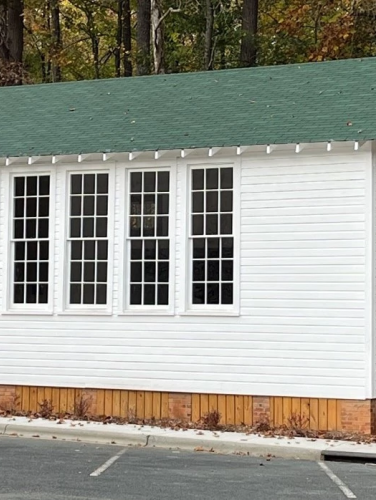
Siloam Schoolhouse
(ca. 1920s)
Siloam was one of five Black schools in the Mallard Creek district, and its students attended the school each year for a six-month term during the 1920s.
3500 Shamrock Dr, Charlotte, NC 28215
Prior to the 1880s educational opportunities for all but the most elite children of Mecklenburg County were non-existent. Matters were even worse for Black children. Prior to the Civil War it was illegal to educate enslaved persons in every state except Tennessee. Though the Freedmen’s Bureau established schools for Black children at the end of the Civil War, there was little local or state government support for public education in the first decade after the war. Under pressure from a group of Charlotteans, the city’s Board of Alderman finally complied with state law by establishing its first graded schools in 1882, one for White children and another for Black children. But the segregationist policies that began in the late 1800s and continued as early twentieth-century Jim Crow laws perpetuated the vast disparities in educational opportunities between North Carolina’s Black and White children.
Property Quick Links
By 1890 there were 43 public school buildings for Black children across the county. Most were located on the grounds of local African American churches, who originally built and financed the schools in response to the desire for education among the formerly enslaved. Although the all-White county school board provided operating costs for teacher salaries and supplies, disparities in funding and teacher training and the general lack of support for Black education prompted Blacks citizens to seek control over their own schools. The “Colored Citizens” of Mallard Creek – the original location of the Siloam Schoolhouse – petitioned the Mecklenburg County Board of Education in 1890 to appoint a “committee of colored men to look after the interests of the colored school” in that district.
In 1903 the county Board of Education purchased an acre of land on John Adams Road, a dirt road off Mallard Creek Church Road, for $101 for the site of the Siloam School. The school was named after the nearby Siloam Presbyterian Church that once educated the formerly enslaved at a school building on the church’s property. The original school, believed to have been a log structure, was replaced with the current building in the 1920s using a design very similar to the Rosenwald Schools, a collaborative effort by Sears-Roebuck president Julius Rosenwald and Tuskegee Institute founder Dr. Booker T. Washington. However, there is no known evidence that the Siloam Schoolhouse was funded by the Julius Rosenwald Fund. Siloam was one of five Black schools in the Mallard Creek district, and its students attended the school each year for a six-month term during the 1920s.
Between 1938 and 1952, many of Mecklenburg County’s Black and White rural schools were closed to consolidate students into more modern and centralized facilities. Although it is unclear when Siloam ceased operations, the School Board began seeking a new owner for the Siloam School property in 1947. The Nelson Young family purchased the one-acre lot and schoolhouse in 1951. Nelson had previously worked as the school’s janitor. The family converted the schoolhouse into a residence – adding interior walls to accommodate bedrooms and a kitchen – where the family’s three youngest children were raised. Converted in the mid-1970s into an auto shop by Nelson’s son James, the property remained in the family until 2005, when a developer purchased the property along with several adjoining acres. At risk of demolition, the deteriorating schoolhouse captured the interest of the Charlotte Museum of History. The museum began efforts in 2017 to save the school. The structure was relocated to the museum’s campus in 2023 and following extensive renovation, reopened as a center for history education.

